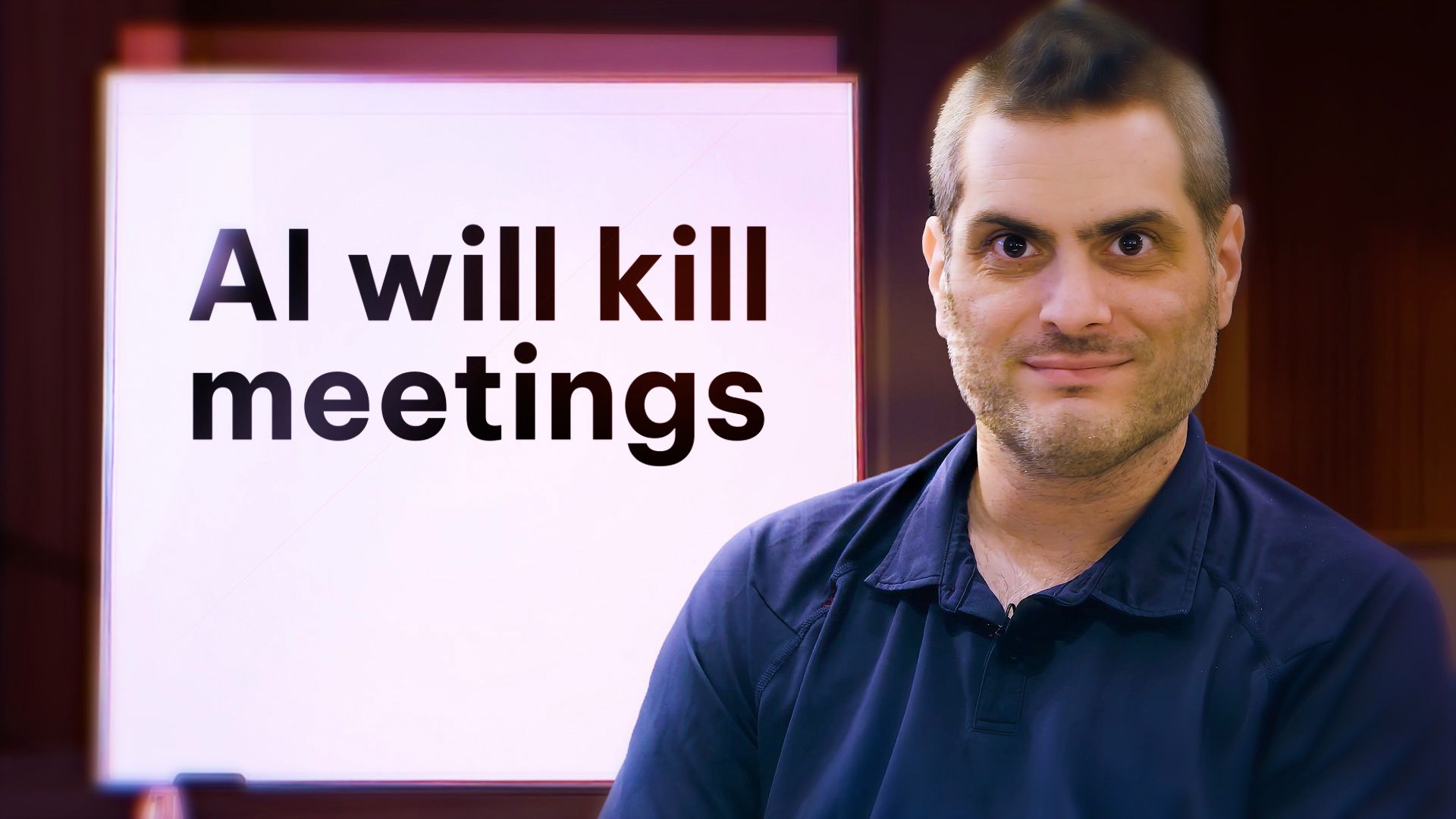- AI with Dino Gane-Palmer
- Posts
- 📅 Will AI kill meetings?
📅 Will AI kill meetings?
Which of these 5 AI myths are actually true?

Hi, and happy Tuesday.
This week, I sat down with Phil Lakin, Head of Enterprise Innovation at Zapier, to compare notes.
Like ourselves, Phil works with some of the world’s biggest companies, helping them figure out what AI actually means for their teams - not just in theory, but in the messy middle of real transformation.
I threw five of the most common AI myths at him… and asked: are these ✅ truths or ❌ lies?.
Myth #1: AI will kill meetings.
We’ve all said it: “This could’ve been an email.”
Still, imagine a future where instead of pinging your teammate for context, you just ask their digital twin - their chatbot avatar: “Hey, what’s your take on this?”
But the best meetings aren’t just about exchanging information. They’re about energy. Chemistry. The back-and-forth spark when ideas collide.
Phil put it perfectly:
“There’s a magic that happens when people are interacting live…”
Verdict: ❌ AI won’t kill all meetings - just the pointless ones.
Myth #2: Your boss is the AI bottleneck, not the tech.
Most people think learning the technology is what’s slowing down AI adoption.
It’s not.
It’s the belief gap.
Tools to automate 95% of repetitive tasks existed for years, before Generative AI.
Adoption has lagged because leaders can’t always see what’s possible.
What can you do if your boss doesn’t “get” AI?
Start small. Build the solution on your own.
Then show them what your solution does.
As Phil says:
“Nothing beats momentum. And if you still can’t win… you’re probably at the wrong company.”
Verdict: ✅ If they don’t “get AI”, your boss is the AI bottleneck.
Myth #3: Learning prompts is like learning Morse code - pointless.
Every few months someone declares prompting is dead.
But if prompting is dead, communication is too.
Think of it like this: AI isn’t a tool, it’s a teammate.
And just like any teammate, the better you understand how it thinks, the better results you’ll get.
Yes, models will get smarter. They’ll guess your intent. They’ll write their own prompts.
But if you don’t know how to guide them, you’ll still get mediocrity - just faster.
Verdict: ❌ Prompting is how you communicate with your AI teammate.
Myth #4: AI success is measured in time saved.
Phil laughed when I asked him how companies measure AI impact.
He said most get it totally wrong.
Most leaders exclaim: “Look how much time we saved!”
But time saved is a feel-good stat because those hours don’t magically turn into innovation.
The better metric?
Revenue per headcount.
That’s the number your board actually cares about.
If AI helps your team 2x their output without adding people, that’s transformation.
Verdict: ❌Beyond time saved, measure impact by outcomes, not effort.
Myth #5: AI makes bad employees worse.
If someone’s lazy with their inputs, AI will just scale their laziness.
If someone’s curious, detailed, and creative, AI becomes a superpower.
AI makes that truth louder.
It exposes who’s coasting… and who’s growing.
And at Zapier, they’ve leaned into that. They even encourage employees to use AI to write performance reviews.
Because efficiency isn’t the enemy - indifference is.
Verdict: ✅ AI doesn’t fix bad habits - it amplifies them.
📺 We’ve only scratched the surface.
In the full episode, Phil dives into these myths in more detail and discusses:
The aspects of meetings AI can help with.
How to prove the value of an AI to your colleagues, DIY'ing a solution outside of work.
The training that staff need that is more important than prompting
What happens to "time saved" when staff use AI to improve efficiency.
What happened to Zapier's culture when they introduced an AI tool to write 360 performance reviews
If you enjoyed this breakdown, share it with a friend who still thinks AI is about “saving time.” They’ll thank you later.
Until next week,

Dino
P.S. In case you missed it, many of you enjoyed my recent newsletter - 📊 What the AI bubble really means - in 7 charts. Look out for part 2 in the coming weeks.